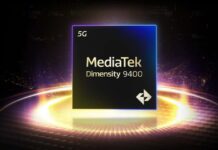Recently, Nvidia has been leveraging AI as a catalyst for its growth. The company has been struggling financially throughout 2022, but it hopes to turn things around by adopting more of its hardware solutions to boost AI computational power. The new strategy will primarily impact Nvidia’s data center and cloud offerings, but it may also trickle down to consumer products, such as gaming GPUs.
In the past few generations, PC users have already been able to experiment with AI inference power provided by the Tensor cores integrated into GeForce RTX GPUs. Nvidia’s AI GPUs could potentially be integrated into MediaTek’s flagship mobile SoCs for 2024, according to industry sources close to DigiTimes.
As a result, established desktop GPU architectures could also be adapted to smartphones. Samsung and AMD tried incorporating an RDNA 2 GPU into their Exynos 2200 SoC, but the performance was underwhelming compared to Qualcomm’s Snapdragon or Apple’s Bionic. As for whether Nvidia can miniaturize an architecture as intricate as Ada Lovelace, it remains to be seen if it will provide any meaningful performance gains.
Boosting AI performance would also benefit the MediaTek SoC, in addition to GPU performance. MediaTek’s AI implementation in the flagship Dimensity 9200 lags behind Qualcomm’s Snapdragon 8 Gen 2. MediaTek can conquer the premium segment if it manages to gain even a slight performance advantage over Qualcomm’s flagship solutions.
While MediaTek denied such rumors, given that it has already used Nvidia GPUs with Arm-based chips designed for Chromebooks, it doesn’t seem so outlandish.







